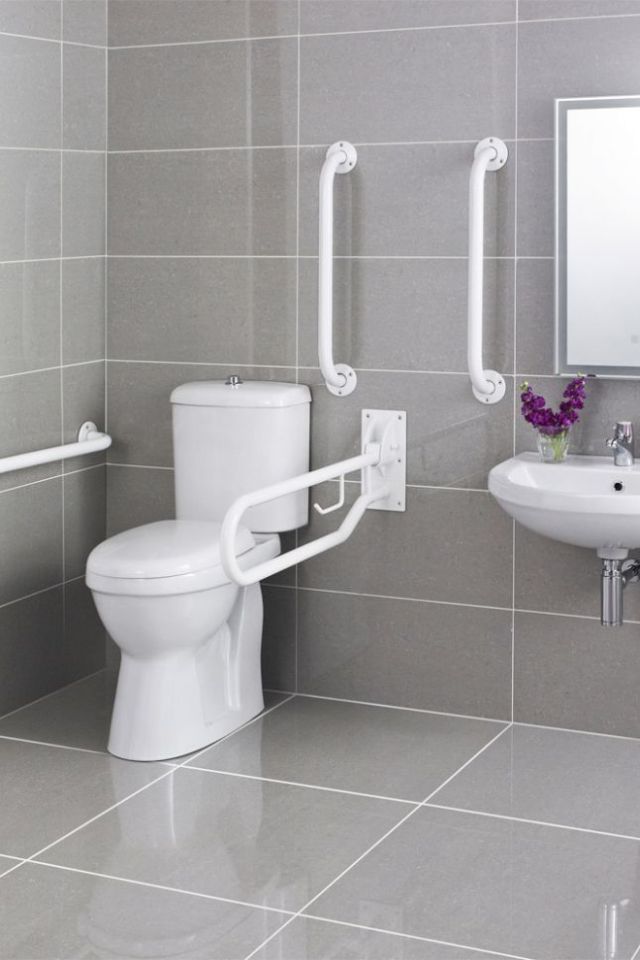
One of the first designs that came to mind for disabled people is the bathroom rails in public bathrooms. Very clearly, it is for people with physical disabilities that prevent them from walking. Right away, I think that makes it an inherently good design to some degree. It’s not confusing. Any person could figure it out when they saw it which is important. If something is designed for a disabled person and it isn’t exactly clear what it is or who it’s for, it can be misused or broken accidentally. So the fact you can see it and acknowledge who it’s for and what the purpose is, it’s a good design. It also satisfies the need for people who can’t use their own legs.
I’m not quite sure if it fixes the person or fixes the problem… It more so allows someone who can’t walk and sit themselves down so they are able to use the toilet on their own without help. So in that regard… I suppose it allows someone to be more self sufficient despite the disability so … that’s good. I suppose you could say it attempts to fix the person since it just leaves the tools to use the toilet like normal, but you could also say it solves the problem since without the rails, they wouldn’t be able to sit themselves on the toilet on their own.
I think it is the best use of resources since it’s so simple. It just has the rails and not much else so it’s simplicity allows it to use only what it needs to function. I have seen some that are on a hinge and can fold up against the wall so they don’t constantly jut out of the wall which is useful. In terms of who it excludes I suppose blind people might hit their leg against it (unless it’s one of those foldy types I mentioned). I think it also could exclude people without arms since the purpose of the rails is to hoist oneself with one’s arms. Although… I think if you don’t have functioning arms or legs then you likely wouldn’t be in a wheelchair trying to use a toilet on your own. Beyond super rare disabilities I don’t know about, it isn’t very exclusionary to many people. It’s just there if you need it and if you don’t, you leave it be.

